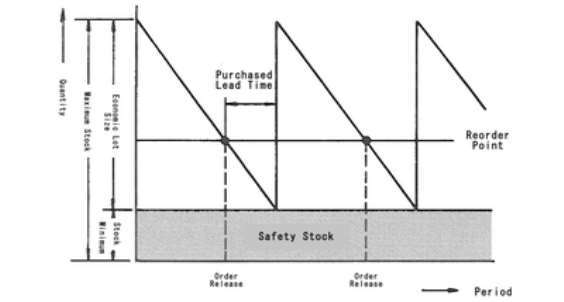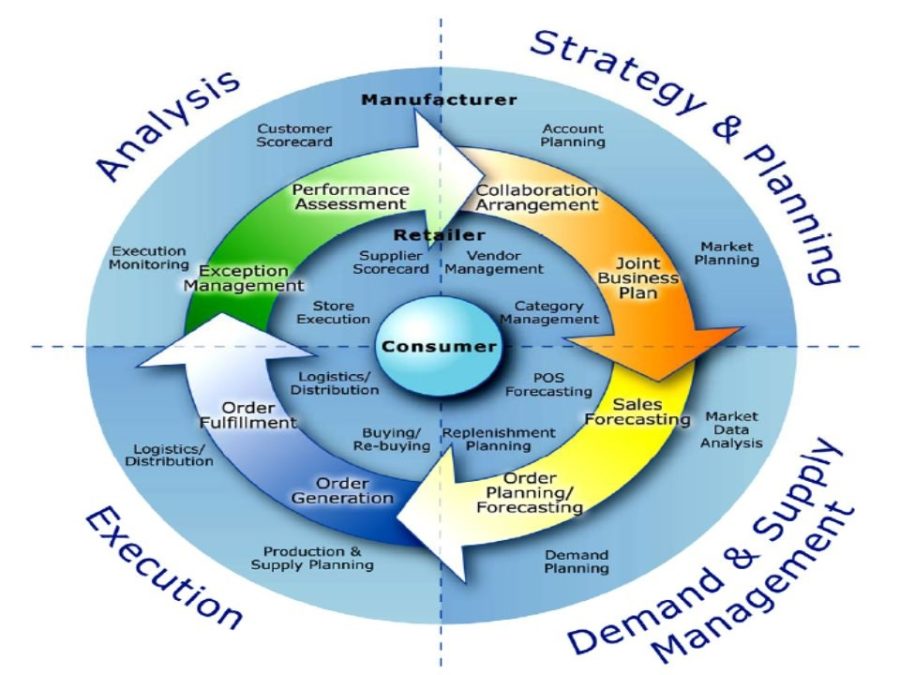Even though Toyota – the Japanese company – was the one who made the lean concept widely well-known with the Toyota production system (TPS), there is a fact shows that lean did not just emerging but it was partially used in the United States. For example in 1908, “Scientific management” made by Frederick W. Taylor was the concept of using scientific method such as standardization to apply with the working process. This scientific idea was criticized to be the initial stage of developing the lean concept, since it helped workers to work in system and ignored the unnecessary jobs. However, Henry Ford is considered to be the first person, who used the lean principles.… Read the rest
Operations Management Techniques
Types of Inventory System (Q and P Models)
The term inventory derives from the French word inventaire and the Latin word inventariom which simply means a list of things which are found. The term inventory includes materials which are in raw form, or are in process, in the finished packaging, spares and the others which are stocked in order to meet all the unexpected demands or distribution in the future. This term usually refers to the stock at hand at a particular period of time of all those materials which are in raw form, those goods which are in progress of manufacture, all the finished products, merchandise purchased products for resale of those products, tangible products which can be seen, touched, measured or are countable.… Read the rest
Collaborative Planning, Forecasting and Replenishment (CPFR)
Collaborative Planning, Forecasting and Replenishment (CPFR) is defined as a business practice that combines the brainpower of two or more trading partners in planning the ways to fulfill the customer demand. They also explained the relationship that CPFR links best practices of sales and marketing, such as category management, to the implementation of supply chain planning and completion process, to increase availability while reducing inventory, transportation and logistics costs. Basically CPFR is an approach that deals with the requirements for good demand management. The most involved industries with CPFR are consumer products and food and beverage.
The main objective of Collaborative Planning, Forecasting and Replenishment (CPFR) is to “optimize” the supply chain process by:
- Improving accuracy of forecasting demand,
- Delivering the right product at the right time to the right location,
- Reducing inventory,
- Avoiding stock outs, and
- Improving customer service.
The Toyota Way Philosophy
Japanese quality movement was a miracle and created world-class products. All these methodologies and concepts developed these quality gurus for internal process and quality improvement crisis are still practiced in various companies. These have become universal approach to improve the quality and manage performance crisis. Quality gurus created work culture and dedicated teams, which developed Japanese production systems through group activities. Toyota Corporation developed a new philosophy to create major change in manufacturing systems and delivered world-class products with internal benchmark for quality of vehicles. In reality, Toyota changed external business environment for competitors and created a long-lasting impact on automobile industry.… Read the rest
Background of Lean Manufacturing
Lean is a philosophy that spurred from the Toyota Production System (TPS). TPS was created by Toyota’s founder Sakichi Toyodo, Kiichiro Toyoda, and Taiichi Ohno. Much of TPS was also influenced by W. Edwards Deming’s statistic process control (SPC) and Henry Ford’s mass production lines. However, the Japanese were not impressed with Ford’s approach because it was filled with over-production, lots of inventory, and much waiting. Toyota identified these weaknesses in Ford’s production line and adapted the production line to create a more productive and reliable production line. TPS and lean also use just-in-time inventory where only small amounts of inventory were ordered and very little inventory was left waiting in the production line.… Read the rest
Concept of Agile Manufacturing
The Agile Manufacturing was presented in the first time at the publication in the USA of a report entitled 21st Century Manufacturing Enterprise Strategy. So, it has been introduced as a method of increasing competitive advantage in response to increasingly competitive global markets. Agile concept focuses on the fast response to changeable of customer demand. The key component in agile manufacturing is flexibility. The agile manufacturing methods can be adjusted and consolidated into companies of any size to ensure the growth and success. The changeable of customer and technological requirements that make the manufacturers develop agile supply chain capabilities in order to be competitive.… Read the rest



